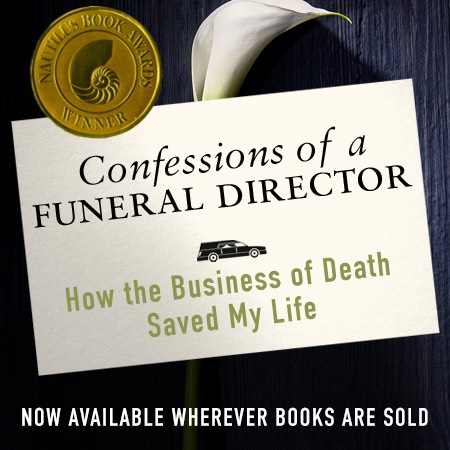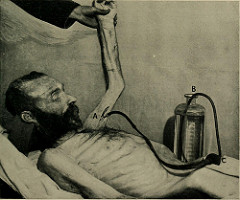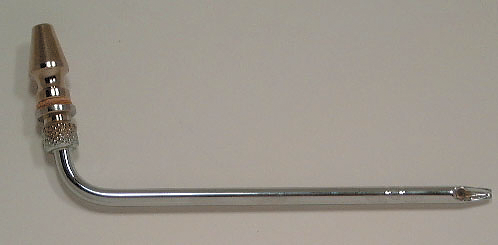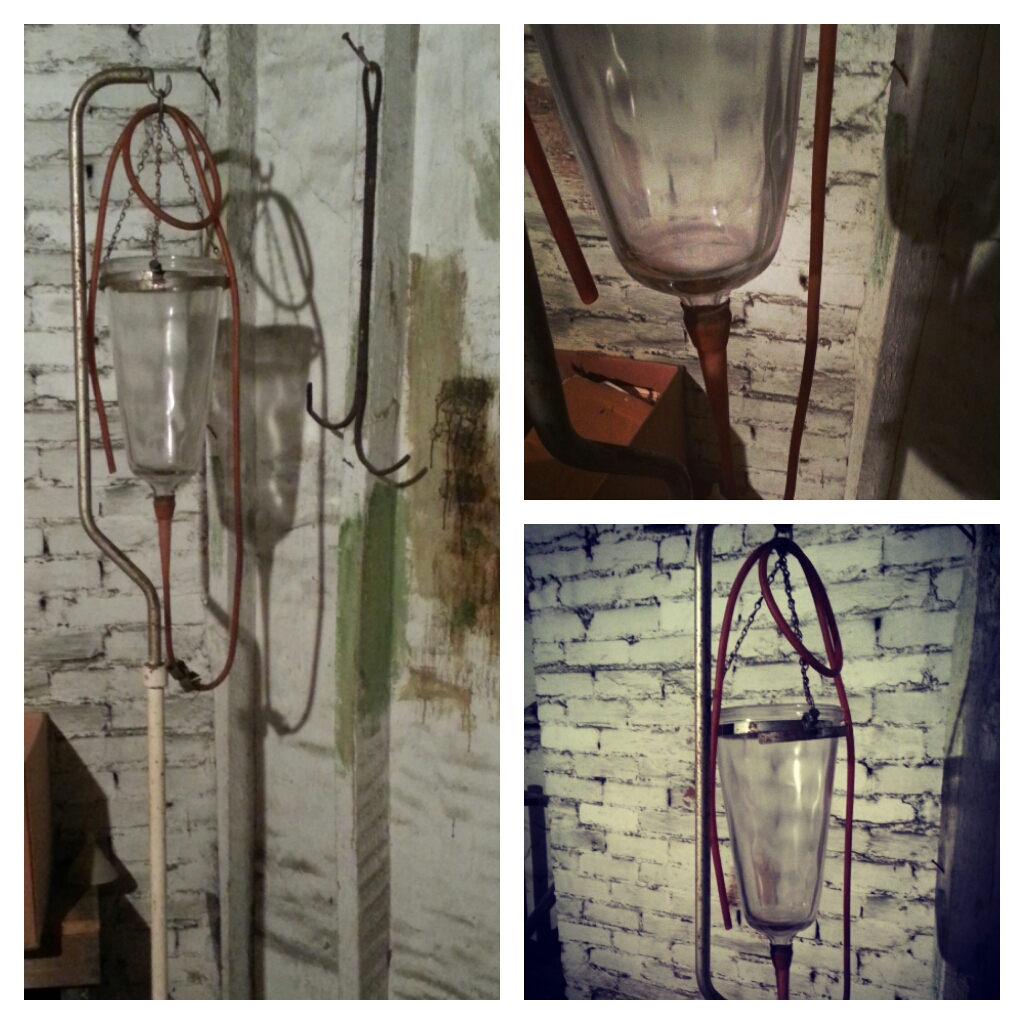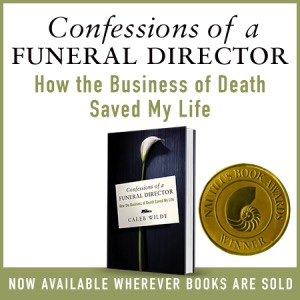Embalming vs. Cremation
10 Things Embalmers CAN Fix
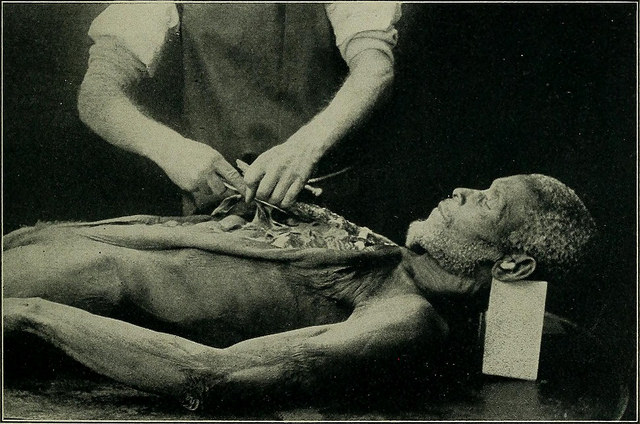
Picture is Public Domain from 1905
Trigger Warning: This post contains descriptive language about suicide. it also contains topics that might cause a loss of appetite for foods such as spaghetti or sushi.
One. WEIGHT LOSS. You’ve tried for 50 years to lose weight, you finally got it off, but your terminal cancer took this weight loss thing a little too far, and it took your life too. Embalmers can’t give you your life back, but we can put some pounds back on. By adding large volumes of embalming fluid and using restricted drainage, we can give you back some weight back AND with some restorative art magic, we can make your weight look healthy. It’s cases like this that embalmers can prove their worth. I don’t believe in embalming is for every body — like many funeral directors do — but when a family says, with tears rolling down their cheeks, “Mom hasn’t looked this good for a year” you know you’re doing something right.
Two. BAD GAS. If you die after a huge meal at Taco Bell, and you’re full of horrific gas, our trocar can fix that.
Three. AUTOPSIES. Usually, the people that are autopsied are people that have died suddenly without their family and friends being able to say “good-bye”. Autopsies are usually performed when there isn’t an apparent cause of death, or the death seems suspicious. Autopsies are invasive. Most involve a cranial autopsy, where the skull cap is cut off, and the brain is examined. The internal organs are examined, which involves the “Y” incision we see on forensic TV shows like CSI. Autopsied bodies are not pretty. But embalmers can put the skull back together, embalm the face and the body, and make an autopsied body like normal again (although, this isn’t always the case. Sometimes autopsied bodies present difficulties that make a body look less than normal).
Four. EYE ENUCLEATION. If the person dies, and they’re relatively young, in good health and registered as an organ donor, there’s a good chance that their eyes could be removed to help someone living who needs a part of an eye. This, as you can imagine, leaves the deceased looking rather different. BUT HAVE NOT FEAR, EYE REPLACING EMBALMERS ARE HERE!
Five. DEATH BY GUILLOTINE. The last recorded death by guillotine happened in France in 1977 to one Hamida Djandoubi who killed his girlfriend. It’s very unlikely that you’ll be killed by a guillotine, but if you are, we can probably put you back together (although you’ll still be dead when we’re done with you. Which brings me to a very important question: If they could have put Humpty Dumpty back together, wouldn’t he still have been dead? So what’s the point?).
Six. EDEMA. Sometimes dying persons are pumped full of fluids. Sometimes dying people are pumped full of drugs that cause water retention, making the deceased look like Violet Beauregarde from Willy Wonka. Most of the time, embalmers use Edema Fluid as a co-injection to help heal the giant blueberry Beauregarde swelling problems.
Seven. GUNSHOT WOUNDS TO THE HEAD. Our ability to fix this depends on where and how. If the gunshot wound exits in the back of the head, and/or isn’t caused by a shotgun or a high caliber gun, we can generally cover up the entry wound and use the trusty atomizer to spray tan the filler and make everything look decent. Many suicide cases are, to some degree or another, fixable.
Eight. LACERATIONS. For the most part, we can fix these.
Nine. JAUNDICE. Word of the day is “Bilirubin.” Bilirubin is a yellow waste product that is usually filtered out by our liver. When the liver starts to fail, bilirubin flows freely throughout the body causing us to turn an ugly yellow. Embalmers can fix yellow (although we can’t always fix the green caused by biliverdin) with our magical jaundice juice that we pump as a co-injection through your arteries.
Ten. SKIN TONE. You haven’t been to the tanning salon because you’ve been stuck in your hospice bed? Embalmers can fix that. There are dyes in embalming fluid that can create different skin tones. We can make you darker, and sometimes we can make you lighter. We can also use the atomizer/airbrush to give you that California sun-kissed skin you’ve always wanted.
If you like my writing, please consider buying my book. If you don’t like it, my mom will buy it back.
And the Pastor said, “Cremation is a sin and anyone who is involved with cremation is a sinner.”
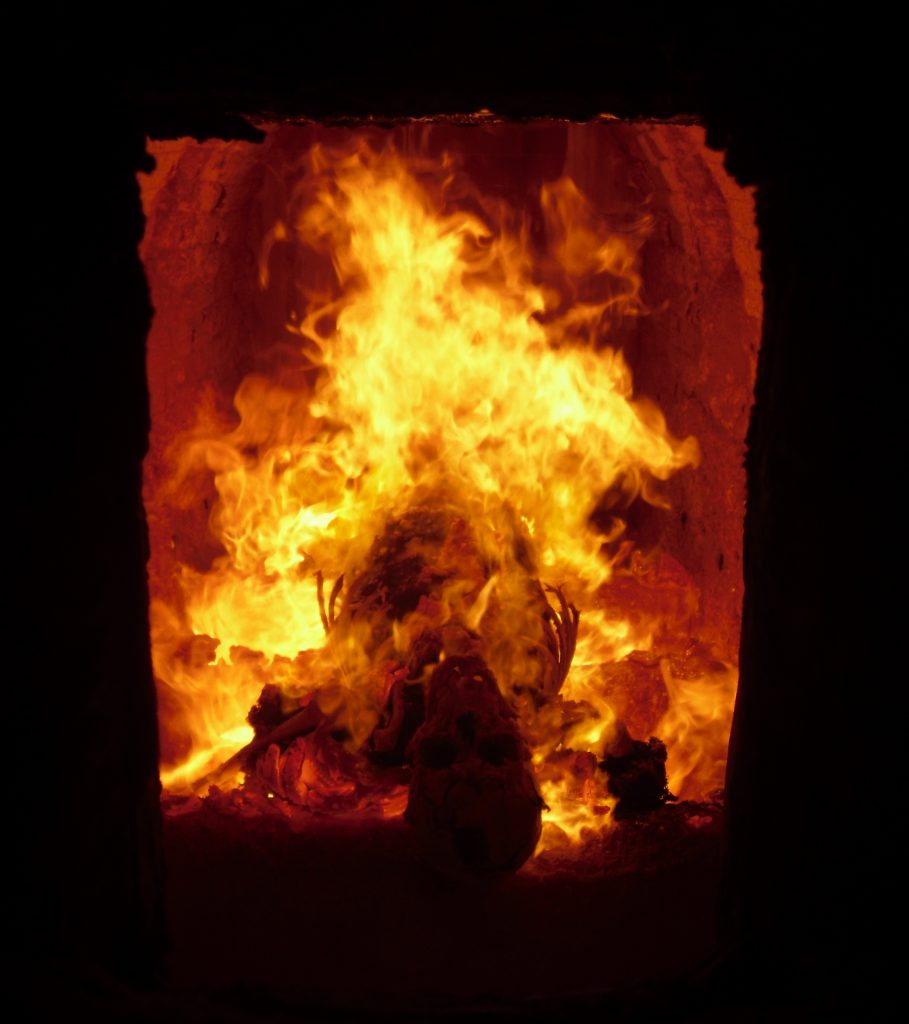
Creative Common License
This is what I was recently told by a Pastor who was scolding me for offering cremation to our customers. He was dead serious. I — as per my usual self — attempted to lighten the somber mood with a witty joke by saying that all the bodies I burn are dead, unlike the bodies of the heretics that the Church burned back in the day. The pastor didn’t appreciate my wit.
In a roundabout way, he may have been hoping he’d find me sympathetic to his anti-cremation stance. There’s a number of funeral directors who conveniently, albeit privately, believe that cremation is wrong. Those private beliefs become public when their customers ask. See, cremation is much cheaper than embalming and cuts into the funeral home’s bottom line and therefore the funeral director’s pocket; couple that ulterior motive with the folk belief that cremation destroys God’s creation and you have a recipe for an anti-cremation funeral director.
This pastor, though, didn’t find a sympathizer in me. So the pastor and I sat in silence for what felt like a couple minutes until I took a different approach to the conversation.
The view that cremation is wrong isn’t uncommon among pastors. I’ve had more than a handful of pastors tell me cremation is a no-no. But it’s not only pastors who take this stance; two of the major world religions and some branches of Christianity also disallow cremation.
For instance, Jewish law is unequivocal that a body must be buried. Those of us who aren’t Jewish have a lot to learn from Jewish burial practices, specifically as it relates to home funerals and green burials, but most of us, like myself, simply don’t believe that burning a body is violating G-d’s creation. The heart of this prohibition against cremation is that humans are created in the image of G-d and so we shouldn’t intentionally harm the body, dead or alive.
Islam too believes that cremation is wrong, but for different reasons and with a much higher level of “no-no”. Islam believes cremation to be haram, which is something that is expressly forbidden by Allah and entirely sinful. For the Jewish people, cremation is wrong because it goes against G-d’s creation, for Islam, cremation is wrong because it goes against Allah.
Christians, like my pastor friend, are a mixed bag when it comes to cremation. Eastern Orthodoxy believes that cremation is wrong for the same reason Jewish law forbids it.
The Catholic Church was anti-cremation up until about fifty-years ago. Now, the official position of the Catholic Church is this:
“The Church earnestly recommends that the pious custom of burying the bodies of the deceased be observed; nevertheless, the Church does not prohibit cremation unless it was chosen for reasons contrary to Christian doctrine.”
And that “nevertheless” was only added in the mid-1960s during Vatican II. Before that, cremation was a seen an abandonment of the hope of resurrection, and, like Judaism and Orthodoxy, abuse of the creation of God.
After the pastor and I sat in silence for a couple minutes, the Pastor piped back up:, “I feel so strongly about this topic that I’ve preached a sermon series on it.”
At this point, I realized that my witty joke had probably done more harm than good. I love pastors because I’ve seen how much good they do during death and dying. For the most part, pastors are generous and loving during death, and this pastor was no different. I honestly didn’t want to ridicule his beliefs and I didn’t want to say something that would jeopardize our friendship.
So, here’s what I said with as much good will as I could: “Pastor, for most people in our area, cremation isn’t a theological issue, it’s a practical issue. People who choose cremation aren’t attempting to disrespect God, nor are they denying the resurrection, nor do they believe that our bodies are toys that we can abuse. Most people choose the less expensive cremation because embalming, buying a casket, buying a grave, buying a vault and paying us funeral directors to organize the whole thing isn’t in their budget.”
He sat in silence, so I continued.
“I’m not a pastor, so I’m not going to share my views on God, but I know a lot of folks without insurance or an irrevocable burial reserve who would have to take out a loan to pay for something other than cremation.”
I stopped there because I didn’t want to sound like I was lecturing him. But, if I had kept going, and I would have shared my views on God, I would have mentioned that my belief is that God values everything in life, but God seems to specifically value love and community … that death creates community, whether it be an embalmed body or a cremated body. And that God doesn’t’ want us to mortgage the house for a full burial and that God certainly doesn’t want us to feel guilty when choosing cremation.
And this, my friends, is the bottom line: funerals are to bring us together, not tear us apart. If we guilt and shame cremation, I don’t believe that helps us, nor does it help to create community. Community, love, and shared grief is what makes a good death, not your method of disposition.
*****
If you like my writing, consider buying my 2017 Nautilus Book Award Gold Winner, Confession of a Funeral Director (click the image to go to the Amazon page):
10 Things Embalmers Can’t Fix
In the world of embalming, there are a couple embalmers who are damn near miracle works. Legends of the industry. When I was in school, our embalming professor worshiped an embalmer named “Jack Adams.”
If the funeral industry had saints, Jack Adams has worked enough miracles to be canonized a couple times over. But there are only a few saints. The rest of us are just human, with limited tricks and limits to our art. And there are some things that the mass majority of us can’t fix (although some embalmers will likely differ with this list because we embalmers are a vexed and opinioned bunch). Here’s ten:
ONE. A couple years ago, a funeral director friend of mine picked up a dead man in his 60s from the hospital with black pigmented skin. The deceased’s wife was black. His children were black. And my funeral director friend assumed that the deceased was black. The day of the service the wife walked into the church to view the body and yelled, “That’s not my husband! My husband is white!” It was, in fact, her husband, but unknown to the funeral director, the drugs that were given to the dead guy by the hospital, coupled with his cause of death had stained his skin black. I thought that my friend was exaggerating, that maybe it was Formaldehyde Gray, but when I saw the pictures (that were taken for lawsuit purposes) there was nothing gray about this man’s skin. This is incredibly rare. I’ve never seen it, nor has my grandfather who has embalmed nearly 10,000 bodies, but sometimes the circumstances and the body combine for some distinct changes that embalmers can’t entirely change.
TWO. TISSUE GAS (aka Clostridium perfringens). The words that strike fear into the heart of the embalmer. Tissue gas results from an organism that duplicates itself every six minutes, causing a normal dead body to totally change in a matter of hours. Tissue gas is so contagious that if it gets on our embalming instruments, it will spread to the other bodies. It’s like the movie Outbreak but in a morgue. And once it takes over, we pray for a cure, but that prayer is rarely answered.
THREE. DISMEMBERMENT Amazingly, we can fix some kinds of dismemberment. If a person is decapitated in a clean fashion at the neck, it’s possible — although unlikely — for us to make things work. But, say a person is laying down on a train track and cut down the middle from pelvis to head, it’s possible to embalm them if we can find the arteries, but restoring them is a no-go.
FOUR. UGLY. Unfortunately, I can’t make you look like Brad Pitt or Cindy Crawford.
FIVE. DECOMPOSITION My Great Uncle (a funeral director for over 50 years) served in the Grave Registration Unit during the Korean War. His group was responsible for embalming the soldiers lost in battle. As you can imagine, some of the soldiers came back in stages of advanced decomposition, rendering arterial embalming a near impossibility. So, instead of arterial embalming, they’d do what my Uncle called “pickling”. There was a small swimming pool of embalming fluid and they’d drop the bodies in the pool and let the bodies soak until they were pickled enough to be shipped back home. As a side note, my Great Uncles entire unit would eventually die from lung cancer from breathing in the fumes of the embalming pool.
SIX. SERIOUS BURNS ON THE FACE. We can’t fix that.
SEVEN. POSTMORTEM STAIN “That doesn’t look like my son!” she yelled as she viewed her 45-year-old boy for the first time since his overdose. I had prepared her for what she was about to see. I told her that he had laid for a long time on his face. That there was distention. That we had to use opaque makeup because of the postmortem stain. That postmortem stain is very difficult to remove with embalming. And that he wouldn’t look like she remembered. “I still want to see him,” she said. And so she did.
EIGHT. SEVERE RHEUMATOID ARTHRITIS, HUNCHBACK, OR ANY OTHER SKELETAL DEFORMITY. When a person has been bedridden for an extended period of time (usually in a nursing home), their posture can suffer severe deformity from a number of causes (note: it can be caused by improper nursing care, but usually it’s simply caused by immobility). Although it’s rare, some families leave their family member in a nursing home for years on end without visiting them. And sometimes the nursing home residents can suffer deformity over the course of those years, which is an unwelcome surprise when the living family sees the deceased lying in a mangled position in a casket. We can correct some deformity, but most are skeletal and can’t be repositioned.
NINE. JAUNDICE GREEN. Normal jaundice is yellow, but when too much embalming fluid is pumped into a body that yellow turns to a Gamora colored green. Once you go Gamora, you don’t go back. We’ve created a problem we can only fix with opaque cosmetics that can look like a spray tan gone wrong.
TEN. THE ONE-THIRD RULE. Generally speaking, if one-third (or more) of the head is disfigured, it’s unlikely we can fix it. We can try. We can put hours and hours into restoration. We can piece the bones back together, wax over the deep cuts and wounds, spray the wax to get a uniform color, and maybe, just maybe, we can pull off something that resembles the deceased. Or, we can call in a miracle from Jack Adams and he can do his wonders for a couple thousand bucks.
*****
If you like my writing, consider buying my 2017 Nautilus Book Award Gold Winner, Confession of a Funeral Director (click the image to go to the Amazon page):
Six Good Things About Embalming and Restoration

© 2009 Nathan Jongewaard, Flickr | CC-BY | via Wylio
Morticians have been taught that embalming is the foundation of the funeral business. That without embalming … we’d be buried. During the modernization of America and at the beginning of the “American way of death”, embalming was the foundation. But we no longer exist in a modern paradigm, we exist in plurality and fragmentation with “American ways (!) of death”.
I don’t think the funeral profession’s survival depends on embalming nor do I think embalming is the pinnacle of a good funeral. England, Canada and Australia are examples of industries that exist without the centrality of embalming. And it would be very neocolonialist of us to assume that our way of embalming represents the best and only way for healthy funeralization.
Despite this preface, I do believe embalming and restoration is valuable. Here’s some short history of the practice as well as some possible benefits of embalming and restoration that I’ve observed.
One. Children.
The fact that my wife and I are infertile has — for some reason — made me extra sensitive to the sight of dead children … or at least that’s the reason I give for the sickness I feel when seeing a child’s corpse.
He was three years old. An all too young victim of cancer. I returned from the Children’s Hospital with his withered corpse and found my grandfather — dressed in his embalming gear — awaiting me in the morgue. That day we had a couple death calls and I had other work to do, so I left my grandfather alone to embalm this young body that had been emaciated by the cancer and the chemo. In fact, I didn’t even offer to assist my grandfather because I knew the embalming experience would put me in a horrible mood for the rest of the week.
Two hours later I stuck my head in the morgue to peak at my grandfather’s results. And what I saw was nothing like the boy I had brought back from the hospital. His skin, which had been a greenish tone, was now a healthy looking flesh tone. All the indentations on his face from the breathing machines, all the tube and machine imprints that had marked his body had been worked out by my grandfather’s expert work. Even the boy’s weight looked more natural, as the embalming filled out the weight the cancer had taken.
Two. Accidents, Cancer Emaciation and Tragedies.
For the most part, we’re able to restore various degrees of accidents, cancer emaciation and tragedies. It helps. It helps to see your loved one in a restored state.
Three. It helps make the symbol of death look pretty.
Dr. Erich Lindemann (grief management pioneer) says that a defining characteristic of persons dealing with complicated bereavement is that they never saw the dead body of their loved one. Although his observation isn’t based on any clinical studies, I think most funeral directors have recognized the weight of Dr. Lindemann’s statement.
An embalmed body helps the symbol look good. There’s nothing wrong with that. It’s a good thing. In fact, at times it’s a beautiful thing.
Certainly, embalming isn’t necessary AT ALL to see the dead body. But, it can help.
Four. War.
The emphasis on embalming the corpse for aesthetic purposes finds its popular beginning in the American Civil War. As a humane token to the grieving families of soldiers who were killed in action, an attempt was made by the armies to return the bodies home for proper burial. To avoid the cruelty of shipping home (often by train) a decomposing body, “field embalmers”, comprised of civilian physicians and some undertakers, began offering families the option of having their sons embalmed. Those that had the “bodies of their relatives returned from the war theaters … could give testimony to the effectiveness and desirability of the chemical embalming by injection” (Habenstein and Lamers 1955: 336).
While refrigeration, etc. can keep persons KIA from decomposing, embalming and restoration can allow the family to see their son or daughter in a restored condition one last time. In some circumstances, this makes embalming invaluable.
Five. When the Body Has to Wait …
On the other side of the coin, maybe there’s a person deployed in the foreign field. Or maybe one of the deceased’s sons lives in China. And the quickest they can get home is in three weeks … and they feel they MUST see the deceased. It’s possible to keep the deceased in refrigeration for three weeks unembalmed, but with a three weeks wait, embalming would be the much preferable option in this case.
Six. Sometimes DIY Isn’t the Best
There’s a lot of “death hacks” and DIY options that all but eliminate the need for a funeral director. But, this doesn’t mean funeral directors are outdated and unneeded. Like taxes, wedding planning, buying a house or even giving birth, there’s a range of symbiotic DIY options and professional involvement. While it’s usually possible to have a DIY funeral, funeral directors are beneficial during the death process.
And while it’s possible for a family to prepare a body for a home funeral, it’s not something everyone wants or can do. We’re here, if you want us. Some of us are VERY good at embalming and restoration and can help your loved look more like the person you remembered in life.
Historical Quickie on Arterial Embalming Equipment
In the frustration of multitasking the details of four new calls, I decided to channel my angst into some spring cleaning. A new computer arrived yesterday, so in between the set up I threw all of our old lets-save-this-cause-we might-need-it tech in the dumpster.
After cleaning out the second floor of a tape player, two broken printers and a 30 pound monster monitor, I shifted my attention to the gallows of the basement … where ALL the old equipment goes to rest. After finding an 18 year old Compact monitor, I found the old embalming machines.
In our morgue today rests a Porti-Boy, the pinnacle of modern embalming tech.
With the Porti-Boy, you can control the pressure of the embalming fluid and the rate of flow via the little knobs on the left and right of the console.
The end of the rubber tube is where the arterial tube is inserted.
Once the incision on the deceased is made and the desired artery is raised (usually the carotid), the arterial tube is placed into the artery, the Porti-Boy is turned on and the fluid pushes out the blood via an open vein, replacing the blood with embalming fluid.
That’s how it’s done today.
Our funeral business is over 160 years old. And when we first started embalming, there was no electric Porti-Boy. In fact, there was no morgue to house the lovely embalming machine.
We came to your house. With our own equipment. By the time my grandfather was a teen, this tradition of embalming at the deceased’s house had waned. He remembers doing it a dozen times or so.
When I went down to the basement to clean out the old computers, I found the old embalming “machine” that my great grandfather would have used. It’s called an embalming gravity flask and stand … or something like that. I’ve actually used this contraption once when we lost electricity during a storm. And it worked.
You put the mixed embalming fluid in the flask, and raise the stand to find your desired pressure. The higher the flask, the more pressure it produced to push the blood out and the fluid in. My predecessors would lug this thing to the home of the deceased, put the body in the kitchen and try their best not to spill any blood. How they kept the blood from spilling (without the use of an embalming table), I have no idea.
My grandfather recounts that he and his dad used to play “who spills the least blood droplets on the floor” game. Apparently – per my grandfather’s selective memory – he would always win.

